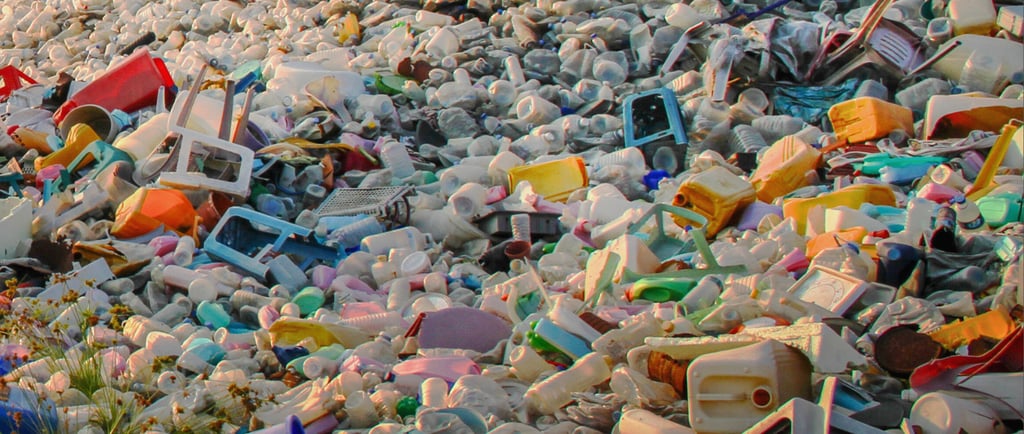
Why Plastic Waste is India’s Biggest Untapped Energy Resource
India produces over 9.3 million tonnes of plastic waste each year — but what if this wasn’t just pollution, but potential fuel? In this powerful blog, we explore how plastic pyrolysis is unlocking a circular economy for the country, and why startups like Anantagni Industries are turning unmanaged plastic into clean energy. 👉 Discover the data, technology, and opportunity behind India’s untapped waste-to-energy future.
4/5/20253 min read
Why Plastic Waste is India’s Biggest Untapped Energy Resource
India produces over 9.3 million tonnes of plastic waste each year — but what if this wasn’t just pollution, but potential fuel?
In this powerful blog, we explore how plastic pyrolysis is unlocking a circular economy for the country, and why startups like Anantagni Industries are turning unmanaged plastic into clean energy.
Discover the data, technology, and opportunity behind India’s untapped waste-to-energy future.
04/05/2025 - 3 min read


India produces over 9.3 million tonnes of plastic waste annually — almost 20% of global plastic pollution. According to the Central Pollution Control Board (CPCB), nearly 60% of this waste is unmanaged — dumped in landfills, burnt in open air, or left to contaminate rivers and coastlines. This isn’t just an environmental crisis. It’s an economic and energy opportunity we’ve failed to tap.
In an era when India imports over 85% of its crude oil needs, the idea that we’re letting plastic — a petroleum-based material — go to waste is staggering. In this article, we will explore how plastic pyrolysis offers a clean, scalable path to extract value from waste and turn India’s plastic crisis into a green energy revolution.
Section 1: The Scale of the Plastic Problem in India
1.1 Annual Plastic Waste Generation
India is the world’s fifth-largest plastic polluter. With over 1.4 billion people and an expanding consumer economy, plastic consumption is expected to rise to 20 million tonnes per year by 2030.
1.2 The Problem of Multilayered Plastics (MLPs)
Over 35% of India’s plastic waste is composed of multilayered packaging — think chips packets, detergent wrappers, chocolate foil — which cannot be recycled using conventional methods. These MLPs often end up in landfills or are incinerated, releasing highly toxic gases.
1.3 Economic Cost
The lack of plastic waste management leads to:
Rising municipal waste costs
Urban flooding (due to clogged drains)
Loss of land productivity
Respiratory diseases in urban clusters
And yet, this very plastic contains latent energy worth billions.
Section 2: What is Plastic Pyrolysis?
Plastic pyrolysis is a thermo-chemical decomposition process where plastic is heated in the absence of oxygen. This breaks down long-chain polymers into shorter hydrocarbon molecules — resulting in three primary outputs:
Pyrolysis Oil (60–70%)
Combustible Gas (15–20%)
Char/Residue (10–15%)
This oil can be used as a fuel in boilers, furnaces, industrial heating applications, and in some cases, refined further into transport fuels.
Benefits of Pyrolysis:
Works on mixed and low-grade plastics (including MLPs)
Decentralized setup possible
No water usage
Minimal emissions if controlled properly
Potential carbon credits and ESG impact
Section 3: How Much Energy Does Plastic Contain?
The calorific value of plastic is comparable to that of conventional fossil fuels:
Material Calorific Value (MJ/kg) HDPE 43–45 LDPE 42–44 PP 43–46 Diesel (comparison) ~45
This means plastic is energy-rich and, when processed safely, can displace fossil fuel usage.
A Real Example:
1 tonne of plastic waste can yield:
600–700 litres of pyrolysis oil
Avoid 2.9–3.2 tonnes of CO2 equivalent emissions (vs. landfilling)
Section 4: India’s Missed Opportunity (Until Now)
Between 2010 and 2019, many pyrolysis units in India shut down due to poor emission control, lack of regulation, and zero quality standards. However, the policy landscape is now changing:
4.1 Government Support
Plastic Waste Management Rules, 2022: Now allow pyrolysis with emission control
EPR (Extended Producer Responsibility): FMCGs are now liable to manage their plastic footprint
Startup India + MSME Schemes: Funding and incubation support
Carbon Credit Potential: Recognized under multiple offset registries
4.2 Role of Anantagni Industries
Anantagni Industries is building a next-generation plastic-to-energy ecosystem:
Lab-scale validation of multiple feedstocks
Modular reactors designed for urban, industrial, and rural settings
Clean oil with low sulphur, meeting industrial burner specs
AI-driven preprocessing systems
Section 5: Environmental & Economic Impact
Benefit Description GHG Reduction Avoided CO2 + reduced diesel usage Circular Economy Converts waste into reusable resource Job Creation Skilled jobs in waste collection, processing Import Substitution Saves foreign exchange on fossil fuels Rural Viability Decentralized plants enable rural deployment
Section 6: The Way Forward
India stands at a climate and economic inflection point. With rising plastic waste, energy insecurity, and global climate pressure, plastic pyrolysis can be the game-changing solution if implemented with:
Technological rigour
Policy alignment
Public-private partnerships
Impact-first entrepreneurs
Conclusion: Lighting a Fire of Opportunity
What was once considered worthless plastic can now be a fuel for India’s clean industrial revolution. With the right technology and execution, companies like Anantagni Industries can turn India’s waste problem into an energy solution — and show the world that waste is not just a challenge, it’s a frontier.
Keywords: plastic waste management India, pyrolysis oil India, plastic to fuel, circular economy startups, clean energy from plastic, Anantagni Industries
Learn how we’re building India’s first circular plastic-to-fuel ecosystem. [Connect with Anantagni ➜ connect@anantagni.com]
